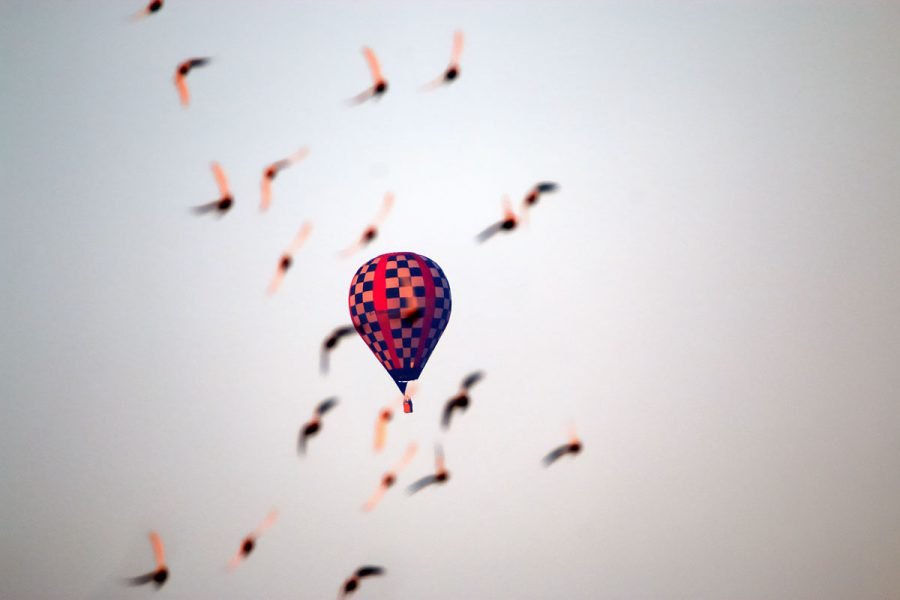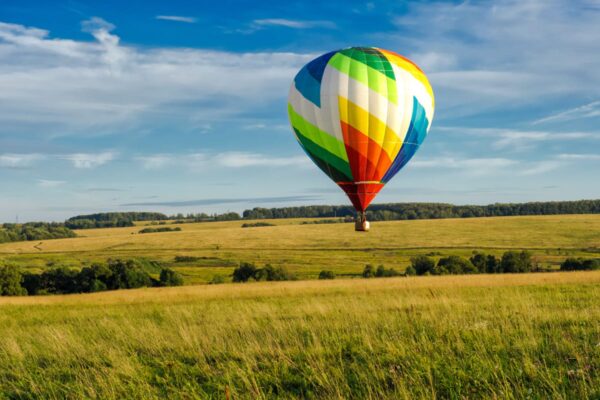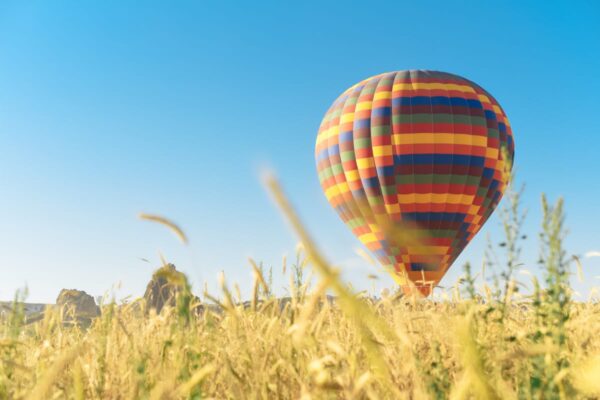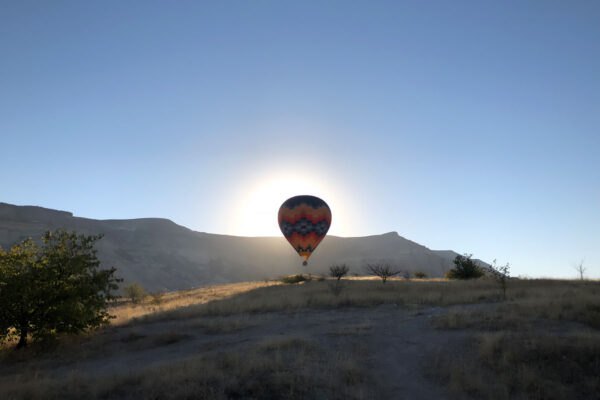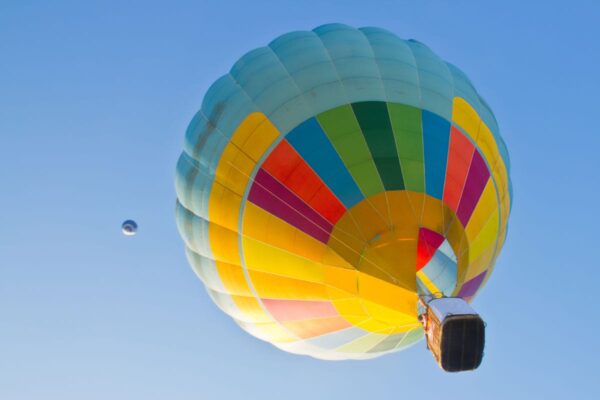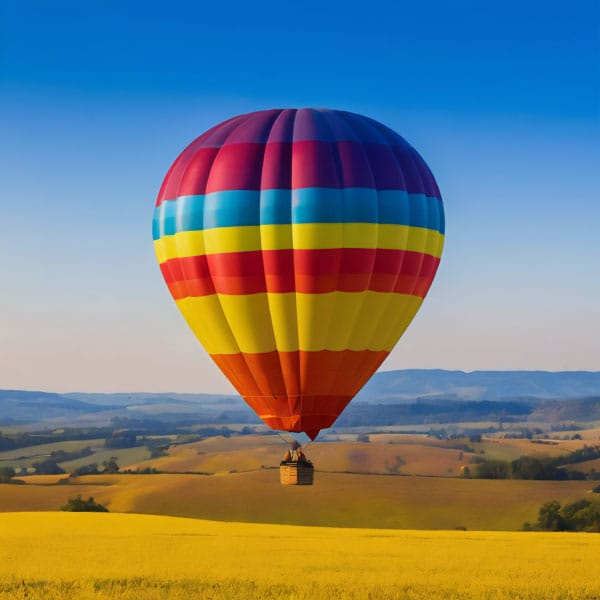Observing animal migration from a balloon offers unforgettable wildlife experiences. A quiet journey through the sky allows you to witness natural behaviors of wild animals without disturbing their migration routes. The balloon moves with the wind, neither frightening nor interfering with the moving animals. Balloon flight specialists are well aware of the best times of year for this type of observation.
Poland is located on key migratory routes in Europe, traveled by millions of birds during spring and autumn migrations. Mammals also participate in seasonal movements, though over shorter distances. Balloon flights offer a unique perspective for observing animal behavior in their natural environment, inaccessible from the ground level.
Choosing the right time of year determines the success of an ornithological balloon expedition. Different species migrate at different times, and weather conditions affect visibility and flight safety. Knowledge of the migration calendar helps plan an unforgettable encounter with wildlife from several hundred meters above the ground.
The Best Seasons for Observing Animal Migration from a Balloon
The seasonality of animal migration sets optimal dates for balloon wildlife safaris. Each season offers different observational opportunities and specific weather conditions. Spring and autumn are the most active migration periods, while winter months also provide interesting observational experiences.
The animal migration calendar consists of two main waves of movement. Spring migration begins as early as February and lasts until May. Autumn migration starts in August and ends in November.
Spring Migration – Period of Intense Movement
The first signs of spring migration appear as early as February under favorable weather conditions. Air temperature significantly influences the start of migrations for various species. A mild winter can accelerate migration by several weeks. Birds begin their journey to breeding grounds earlier than in years with harsh winters.
March and April mark the peak of spring migration in Poland, when tens of thousands of birds traverse the airspace. Cranes, geese, and swans form spectacular formations visible from balloon altitude. Observing from the air allows appreciation of the true scale of the migration phenomenon. May concludes the main spring migration period as most species reach their breeding sites.
Spring Migration Calendar:
- February: first movements during mild weather
- March: start of mass crane and goose migration
- April: peak migration for most species
- May: end of main migratory wave
- June: last movements of delayed species
Autumn Migration – The Spectacle of Great Movement
August marks the beginning of autumn animal migration when young birds join adults for the first time. The first wave includes species nesting in northern regions of Europe. Movement intensity gradually increases throughout the month, reaching its peak in September.
September and October are the best months for autumn observations from a balloon. The peak of migration occurs in the second half of September, when birds move in larger groups. Weather conditions are usually more stable than in spring, which makes planning observation flights easier.
November closes the main autumn migration season, although some species continue their journey into December. The last flocks often have to speed up their movements due to approaching frosts. November observations offer the opportunity to spot species wintering in southern Europe.
Winter concentrations and local movements
Winter months are characterized by observing local animal movements related to food searching. Low temperatures force animals to change their habitats. Mammals descend from highlands to valleys, and birds concentrate around open water bodies.
January and February offer the highest winter activity, as European bison move between feeding areas. Moose descend to lowlands in search of food unavailable in the mountains. Waterfowl gather in places free of ice cover, forming large concentrations.
Which animal species migrate in Poland and when can they be seen from the air?
Poland is a key point on the map of European animal migrations due to its strategic geographic location. Millions of individuals cross Polish territories during seasonal migrations. The diversity of migrating species offers rich observational opportunities from a balloon perspective. Mammals and birds participate in migrations of various nature and range.
Birds dominate among migrating species in Poland, with seasonal movements involving nearly 200 species. Balloon observation allows spotting formations and behaviors inaccessible from the ground. Some species can only be observed during specific months of the year.
Migrating birds in Poland
The white stork is a symbol of Polish bird migration and arrives in Poland in March. It begins its return journey in August, wintering in Africa after covering a distance of about 10,000 kilometers. Balloon observation reveals the routes stork flocks take through different regions of the country. Young storks join adults during their first autumn migration.
Swallows appear in Poland in April and stay until September or October. They are characterized by extraordinary flight speed and agility while foraging. From a balloon, one can observe masses of swallows gathering before departure on power lines. Their formations during migration create fascinating patterns in the airspace.
Cranes migrate through Poland twice a year, forming characteristic wedge-shaped formations. The spring migration lasts from early March to mid-April. Autumn migration begins in August and ends in November, offering the most spectacular observations.
Migration dates of key bird species:
- White stork: arrival in March, departure August-September
- Swallows: arrival in April, departure September-October
- Cranes: activity March-April and August-November
- Geese: intense movement in March and September-October
- Swans: observed throughout the migration period
- Birds of prey: peak migrations April-May and September
Migrating Mammals in Poland
Bison move distances of several or a dozen kilometers in search of suitable habitats. Migrations occur in herds numbering several dozen individuals. In winter, they descend from highlands to valleys where feeding conditions are better. The Białowieża and Knyszyn Forest areas offer the best opportunities for balloon observation.
Moose migrate alone or in small groups, with their movements depending on food availability and weather conditions. In winter, they descend from higher terrain to valley areas with greater food resources. Telemetry studies reveal a variety of migration routes for these largest Polish deer. Balloon observation allows seeing their behavior without disturbing the animals.
Deer participate in rutting during September and October, characterized by increased activity and movement. The mating season offers exceptional aerial observation opportunities. Males move between groups of females, displaying characteristic behaviors. Balloon flights enable observing natural behaviors without interfering with the reproduction process.
Tip: The best mammal migration observations from a balloon take place in the early morning and evening hours when animals are most active. Avoid noisy behavior in the balloon basket to prevent frightening the observed animals.
Professional Balloon Flights with ProBallooning
ProBallooning specializes in organizing professional balloon flights for nature observation enthusiasts. Experience gained over years translates into passenger safety and comfort during aerial expeditions. Pilots have hundreds of flight hours and have participated in sports competitions worldwide. Local operations eliminate long waiting times for flight execution.
The balloons used by the company are small-sized, providing an intimate flight atmosphere. Each balloon undergoes regular technical inspections ensuring maximum participant safety. Ground staff takes care of every detail of the balloon expedition, from equipment preparation to the aeronaut initiation ceremony.
Scenic Balloon Flights
Scenic balloon flights offer the opportunity to admire landscapes from a unique perspective during approximately one-hour aerial journeys. Flight routes adapt to wind direction and weather conditions. Participants can observe animal migrations in their natural environment without disturbing migration routes. Experienced pilots share knowledge about local fauna and flora.
Flights take place exclusively on clear days with wind not exceeding 5 meters per second. Passenger safety is the priority of every sightseeing flight. The pre-flight briefing prepares participants for the aerial adventure and covers safety rules. Each flight concludes with a traditional toast and the presentation of a commemorative diploma.
Sightseeing flights allow observation of diverse landscapes and ecosystems from heights of several hundred meters. Participants can notice details unavailable from ground level, such as bird formations or animal migration routes. Balloon photography offers unique opportunities to capture natural behaviors of wild animals.
Private Balloon Flights
Private balloon flights provide an exclusive experience for up to five people. The personalized nature of the flight allows the route to be tailored to passengers’ preferences and current migration conditions. Pilots can focus attention on specific animal species or areas particularly interesting to participants.
Flexibility in planning private flight routes enables optimization of migration observation. Experienced pilots know the best locations for animal concentrations during different seasons. The ability to communicate with the pilot during the flight allows adjustment of altitude and direction according to observational needs. Private flights also offer better conditions for wildlife photography.
Booking a private flight can include special requests related to observing specific species. Pilots adjust the schedule to periods of peak migratory activity of selected animals. The private nature of the flight ensures a calm atmosphere conducive to nature contemplation.
Family Balloon Flights
Family balloon flights can accommodate up to five people, including children over four years old. Special safety procedures are adapted to the needs of the youngest passengers. Pilots have experience working with families and know how to engage children in observing nature from the air.
The educational aspect of family flights includes stories about animal migration and ecosystems observed from above. Children learn to recognize various bird species and mammals in their natural habitats. An interactive element of the flight involves the whole family in nature observation. Special educational gadgets help children identify observed species.
Safety for families with children requires particular attention during all phases of the flight. Tailored briefings consider the needs of different age groups. The balloon basket is equipped with additional safety features for the youngest passengers. Family flights often mark the beginning of children’s fascination with nature and wildlife observation.
Engagement Balloon Flights
Engagement Balloon Flights create a romantic atmosphere hundreds of meters above the ground. The intimate nature of the flight, limited to a maximum of three people, ensures privacy during this special moment. Pilots discreetly assist during the engagement ceremony while maintaining an appropriate distance. The spectacular views from the balloon provide an unforgettable backdrop for the proposal.
Special engagement packages may include additional elements such as champagne or a bouquet of flowers. The timing of the flight is chosen to take advantage of the most beautiful landscape lighting. A sunset or sunrise from the balloon creates a magical atmosphere for this unique occasion. The team’s professional discretion guarantees intimacy during the ceremony.
Photographic documentation of the balloon engagement offers unique shots of this important moment. The perspective from above creates a spectacular background for wedding photos. The romantic flight can be combined with bird migration observation, adding symbolic meaning to a new beginning. Engagement flights often take place during the most beautiful seasons of the year.
Tip: When booking a flight with ProBallooning, discuss your interest in observing animal migration in advance. Experienced pilots will adjust the route and flight altitude according to current migration conditions, increasing the chances of spectacular sightings.
Factors Affecting Visibility of Animal Migration During Balloon Flights
Weather conditions determine the success of migration observations from the balloon and the safety of flight participants. Fog significantly reduces visibility and affects animal behavior during migrations. Birds flying in low visibility change their direction and speed to adapt to conditions. Wind strength influences balloon stability and the quality of wildlife observations.
The balloon’s flight altitude determines the scope of observation and species identification possibilities. Flying too low may scare animals and alter their natural behavior. Flying too high makes species identification and detailed observation difficult. The optimal range is 200–500 meters above ground level for most observations.
The Impact of Weather on Migration
Atmospheric pressure significantly affects animal migratory activity and their decisions to begin migration. High pressure favors intense migrations and stable flying conditions. Low pressure can halt or delay migration for various species. Birds respond to pressure changes in advance, planning movements according to weather forecasts.
Air temperature determines migration intensity and animal activity throughout the day. Warm days encourage animal activity and prolonged observations. Sudden cooling can stop migrations and alter migratory plans. Temperature differences between day and night affect the migration rhythm of many species.
Wind direction and strength influence migratory routes and birds’ flight energy use. Birds use tailwinds to conserve energy during long migrations. Headwinds can change migration direction or delay movements. Crosswinds affect flock formations and group organization during migration.
Time of Day and Migratory Activity
Early morning hours are characterized by the highest bird activity and optimal visibility. The first rays of the sun trigger intense migratory movement of various species. Calmer weather conditions facilitate animal takeoff and safe flights. Cooler air provides better conditions for long-distance journeys.
Afternoon hours offer the best visibility for balloon observers. The sun at its zenith eliminates shadows and improves the sharpness of the observed animals’ images. Thermals rising from the heated ground help birds conserve energy during flight. Balloons also benefit from thermals to maintain the appropriate flight altitude.
Evening hours before sunset favor observations of animal gatherings. Birds assemble in roosting sites, creating spectacular clusters. Lighting conditions provide excellent opportunities for wildlife photography. The evening quiet allows hearing the calls of migrating animals from the balloon’s height.
Technical aspects of balloon observation
The stability of balloon flight depends on the pilot’s skills and weather conditions. Experienced pilots can use air currents for smooth flying. Altitude adjustment allows tailoring the observational perspective to specific needs. Communication between the pilot and passengers increases observation effectiveness.
Observation equipment requires adaptation to balloon flight conditions and basket vibrations. Binoculars with image stabilization compensate for natural balloon movements. Cameras with fast autofocus enable capturing moving animals. A tripod can be problematic in a balloon basket due to limited space.
Tip: When planning an observation flight, choose days with high atmospheric pressure and light wind. Check the weather forecast for the flight area at least 24 hours in advance, considering possible changes in conditions.
The most interesting places in Poland and worldwide for migration observation from a balloon
Poland offers exceptional locations for observing animal migration from a balloon thanks to its strategic position on migration routes. The diversity of landscapes influences different types of animal migrations and species richness. Some places are famous for concentrations of specific species at particular times of the year. International destinations offer different observational experiences and unique species.
European bird routes cross picturesque landscapes and provide spectacular aerial observations. Each location features unique species and periods of peak migratory activity. Local geographic and climatic conditions affect the intensity and timing of migrations.
Polish migration hotspots
The Bialowieza Forest is a unique place for observing migrations of mammals and forest birds from a balloon. European bison move through primeval forests over distances of several kilometers. Winter migrations lead herds to valley areas with better feeding conditions. Observation from a balloon reveals natural behaviors of Europe’s largest mammals without disturbing their environment. The diversity of forest birds offers rich observational opportunities throughout the year.
The Biebrza Valley offers spectacular observations of water birds and wetland mammals. Moose and beavers actively move through the vast marshlands. Spring floods affect migration patterns and animal concentrations. Extensive open areas provide excellent visibility from the balloon over long distances. Unique wetland ecosystems attract rare bird species.
The Warta River mouth into the Oder River is a key point for waterfowl migration on a European scale. Thousands of geese stop in the area during spring and autumn migrations. White-fronted and bean geese form spectacular concentrations visible from above. Whooper swans winter in numbers of several thousand individuals on open waters.
List of the best Polish locations:
- Bialowieza Forest: European bison, moose, forest birds
- Biebrza Valley: water birds, wetland mammals
- Warta River Mouth: geese, swans, water birds
- Bieszczady Mountains: deer, mountain birds, predators
- Carpathians: cranes, eagles, high mountain migrations
- Mazury Lakes: water birds, winter concentrations
European Migration Routes
The Strait of Messina between Italy and Sicily concentrates the migration of birds of prey. Spring migrations offer spectacular views of thousands of raptors. Eagles, hawks, and falcons cross the narrow strait in large concentrations. Balloon observation reveals flight strategies and formations inaccessible from the ground. Local weather conditions influence the intensity of daily movements.
Scandinavian regions offer observations of Arctic bird migrations during the short northern summer. Large flocks of geese and swans move across tundras in spectacular formations. The white nights provide extended observation opportunities without time restrictions. Unique Nordic species rarely seen in other parts of Europe.
The Rhone Valley in France serves as a main migration route for birds moving between northern Europe and Africa. The concentration of diverse species creates one of the richest observational experiences. The variety of landscapes from mountains to river delta offers diverse sightings. A local birdwatching center supports migration research.
Global Migration Destinations
The Serengeti in Tanzania offers the most famous mammal migration spectacle in the world. Millions of wildebeest and antelopes traverse the savannas annually. July marks the peak migration during the crossing of the Grumeti River. Balloon observation reveals the vast scale of African hoofed animal migrations along with their accompanying predators.
Masai Mara National Reserve in Kenya continues the great migration spectacle. The Mara River forms a natural barrier for migrating herds of hoofed animals. Dramatic crossings through rushing waters provide unforgettable observations. Predator concentrations around crossings create a complex migratory ecosystem.
The Hula Valley in Israel is a key resting point for birds migrating between Europe and Africa. Artificial reservoirs attract millions of birds during migrations. Autumn concentrations of cranes create one of the largest migration spectacles. Balloon observation allows appreciation of the scale of this natural phenomenon.
Tip: When choosing an international destination, consult with local birdwatching guides. Knowledge of local conditions and migration timing increases the chances of spectacular balloon observations.
Practical Tips for Birdwatching Balloon Safari Enthusiasts
Preparing for a birdwatching balloon safari requires careful planning and familiarity with the migration calendar. Proper equipment enhances the quality of observation experiences and allows for documentation. Safety rules ensure a smooth trip and comfort for all participants. The success of the expedition depends on many external factors that should be considered during planning.
Flexibility in scheduling increases the chances of flying under optimal conditions. Weather conditions can change plans at the last minute, so it is advisable to prepare alternative dates. Communication with an experienced pilot will help determine the best time and location for the flight.
Planning the Observation Trip
The choice of flight date should take into account the peak migration of selected species and local weather conditions. Spring migrations focus on March and April for most species. Autumn migrations peak in September and October, offering the richest observations. Consulting with an experienced pilot will help establish the optimal timing for specific species.
Weather monitoring begins several days before the planned observation flight. Stable atmospheric conditions favor safe flights and animal activity. Low cloud cover may prevent balloon launch or limit visibility. Strong winds affect passenger comfort, safety, and observation stability.
Booking a flight should consider the possibility of rescheduling due to weather conditions. Professional balloon companies offer alternative dates at no extra cost. A flexible approach to scheduling increases the chances of conducting the trip under ideal conditions. Early booking provides a wider choice of dates and allows adjustment to the migration calendar.
Observation and Photography Equipment
Binoculars are a basic piece of equipment for every nature observer in a balloon. Recommended magnification is 8×42 or 10×42 for optimal image stability during flight. Lightweight models reduce strain during prolonged observations in the limited space of the basket. A wide field of view facilitates tracking fast-moving animals.
A camera with a telephoto lens allows capturing spectacular migration observations. Image stabilization compensates for natural balloon vibrations and basket movements. Fast autofocus enables photographing moving animals without losing sharpness. Extra batteries and memory cards ensure uninterrupted operation throughout the entire flight.
Essential observer equipment:
- 8×42 binoculars with safety strap
- Camera with telephoto lens and stabilization
- Regional ornithological guide
- Terrain map with marked migration routes
- Extra batteries and memory cards
- Observation notebook and pen
- Power bank for charging devices
The ornithological guide will assist in identifying species observed from the balloon’s altitude. Bird atlases contain detailed information about migration and species identification. Mobile apps offer access to bird calls and migration maps. A waterproof notebook allows for recording observations during the flight.
Observation Techniques from the Balloon
A calm balloon flight provides excellent observation conditions without engine noise. The slow movement of the balloon allows for prolonged observation and detailed species identification. Flight altitude can be adjusted to observation needs and animal activity. Communication with the pilot helps locate interesting sightings and adjust the route.
Scanning the terrain should be done systematically, starting from the nearest areas. Gradually expanding the field of view increases the chances of spotting animals. Focusing on characteristic habitats yields better observational results. Observing shorelines, clearings, and isthmuses can reveal migration routes.
Cooperating with the pilot increases observation effectiveness and the possibility of spotting interesting species. Experienced pilots know animal concentration spots during different seasons. Joint observation allows for exchanging insights and better understanding behaviors. The pilot can adjust direction and flight altitude according to current observation needs.
Tip: Bring a thermos with hot tea and a light energy snack on the flight. Mornings can be chilly at altitude, and the flight lasts about an hour. Comfortable shoes with non-slip soles will ensure safety in the balloon basket throughout the trip.
Summary
Observing animal migration from a balloon offers unforgettable nature experiences combining adventure with education. Spring and autumn months provide the best conditions for spectacular sightings of migrating species. The diversity of animals migrating through Poland creates rich observational opportunities for nature enthusiasts. Professional balloon companies guarantee safe and comfortable flights tailored to observers’ needs.
The success of a balloon ornithological expedition depends on careful planning and flexibility in scheduling. Weather conditions and animal activity determine whether flights can be conducted under optimal circumstances. Proper observation equipment and knowledge of migration calendars enhance experience quality and trip satisfaction. Each flight is a unique encounter with wildlife from a perspective several hundred meters above ground.
